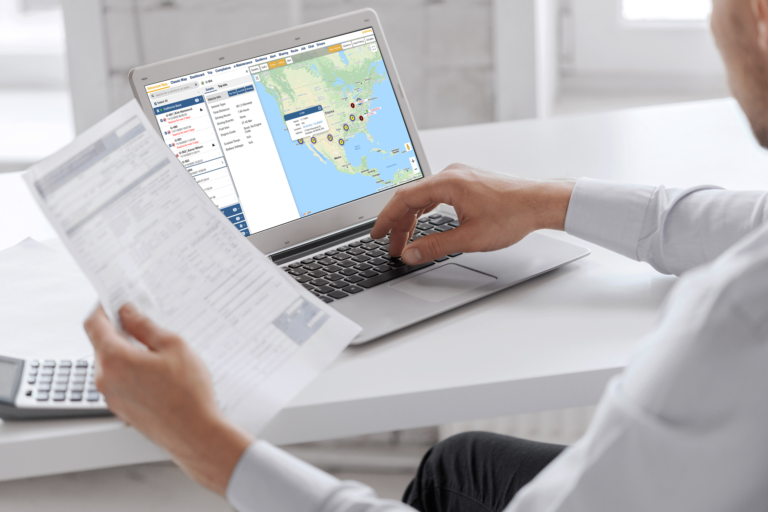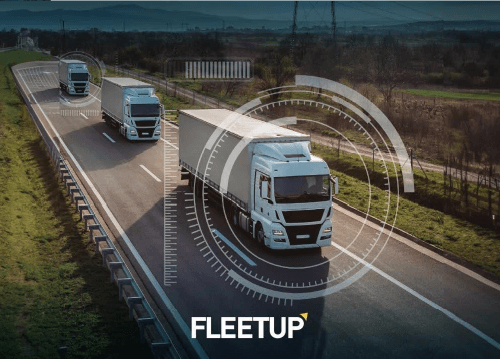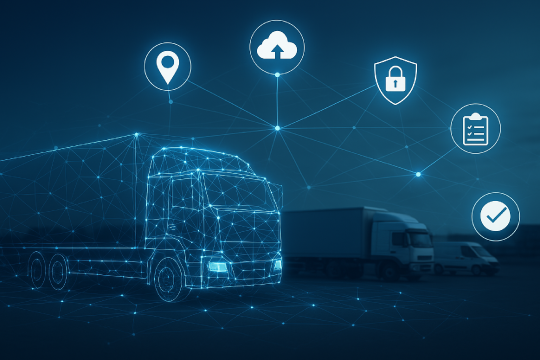The 4 pillars of fleet automation
Most fleet software providers offer some kind of automation. A few even offer AI solutions. But these services mistake the forest for the trees. While their features impact one or two aspects of fleet management, they ignore the ways that automations are starting to be linked – and the order of magnitude by which linked automations increase efficiency.
These network effects are the core of the automation revolution. They’re a sea change that will transform the way every employee works, every department is organized, and every job is done. The companies that catch the wave early will be able to do more work, better, with fewer errors and a smaller team. Because automation will transform businesses so quickly, companies that wait will have a hard time catching up.
Comprehensive fleet automation is supported by four pillars. Each reinforces the others – if one is missing, the remaining are weakened. In order to understand how their effects compound, it’s important to define each. Let’s start with:
1. Automating data collection
Fleets are constantly generating data. It starts with the obvious – how many hours drivers spend on the road, how many shipments they complete, how much fuel they use. But each of those can be broken down into additional data categories. How many overtime hours did each driver accumulate? How many shipments were delivered late? How much fuel was wasted because of idling versus speeding?
Then there’s invisible data. These are the things that occur outside specific jobs and projects, so get forgotten. For example, how many assets aren’t being used? How long are they sitting idle? How do these wasted assets impact revenue?
With automated data collection, all of this information – and much, much more – is monitored and stored. Every second of every day is watched by robotic eyes that never blink. What would be impossible for a high-paid team of the most meticulous men and women is easy for automation software.
2. Automating data analysis
A cache of data that’s too large for humans to collect will be far too large for humans to analyze and interpret. That’s why AI is a crucial part of the automation revolution.
AI can be trained to recognize, categorize, and document incredibly complex data patterns. Sometimes this means sorting through a month’s worth of minute-by-minute safety stats and identifying the driver most likely to get into an accident. Other times it means analyzing the image of a live video and spotting a driver who is showing signs of fatigue.
Those two capabilities are what AI is doing for fleets today – which means tomorrow’s AI will be able to do much more. It’s a technology that’s becoming exponentially more powerful with every passing year. Software providers that don’t add it to their tool set aren’t only failing to give their clients useful features, they’re also going to be behind the curve when AI adoption becomes a standard must-have for every competently managed fleet.
3. Automating management tasks
Every manager will appreciate data that’s carefully interpreted and organized into an easy-to-understand format. But at the end of the day, that’s just throwing another folder onto their desk. The most exciting part of fleet automation is that it takes the next step – it does the meticulous jobs that managers don’t want to do, freeing them to focus on big-picture creative work.
For example, the AI that identifies reckless driving will do more than just deliver that data to the driver’s manager. It will speak to that driver through a voice assistant and tell them exactly what they need to do, whether that’s slowing down, waking up, or putting their eyes back on the road.
Managers no longer have to coach drivers because the AI does the coaching for them. And unlike managers whose schedules are full, AI will be in every cab with every driver, always. The second any employee starts to make a bad decision, automation will tell them to improve their behavior.
That’s one of many examples of the kinds of management tasks that AI automates. More and more of these tasks are being automated every year. Fleets that embrace AI are already able to coach more drivers more effectively using fewer staff and fewer training hours. What they’ll be able to do in the future will be almost unimaginable.
4. Automating the processes that optimize your organization
Managers want meticulous tasks taken off their desks. But they don’t want to farm out long-term strategies to AI. Building a business that will thrive in tomorrow’s economy takes the kind of creativity and instinct that no machine, no matter how intelligent, will ever have.
What AI can do, however, is interpret all the micro data points that managers can’t see. The final pillar of the automation revolution is turning this kind of analysis into big picture strategic suggestions. AI will analyze the data it collects and develop a variety of game plans. Sometimes, these will be simple – suggesting which drivers need to be coached to idle less often. As AI grows more powerful, they’ll become more complex – suggesting entirely reorganized processes based on hundreds of small savings that, added together, dramatically decrease costs.
At the end of the day, leadership will still be in control. But they’ll have a better understanding of all the options they have, which strategies they can choose, and what their competitive landscape looks like. AI will be leadership’s new, robotic right-hand-man.
Only FleetUp offers all 4 pillars of fleet automation
Without automated data collection, AI can’t perform automated data analysis. Without AI data analysis, management tasks can’t be automated and processes can’t be optimized. Each pillar supports the others. And only one fleet automation provider offers all four – FleetUp.
Prepare your fleet for an automated future.
|






